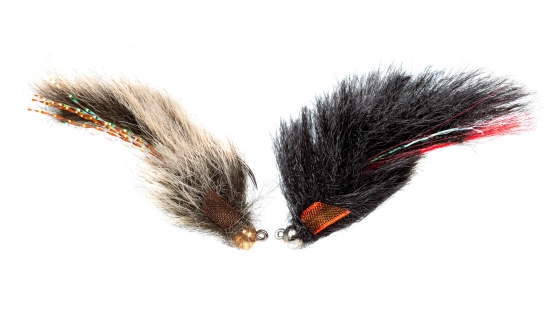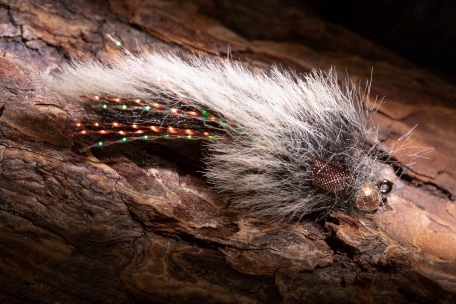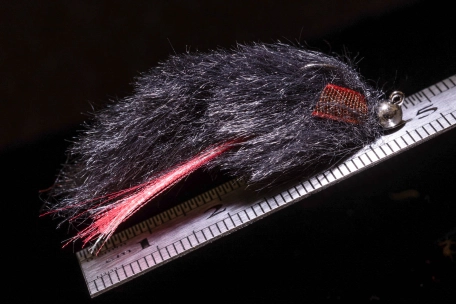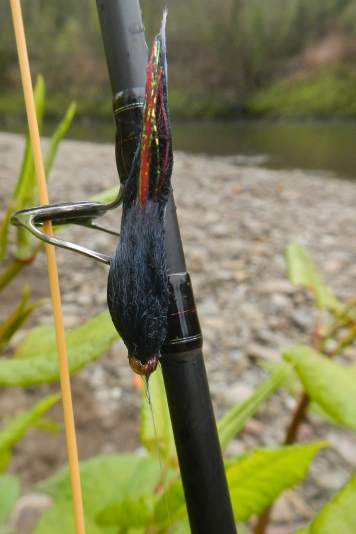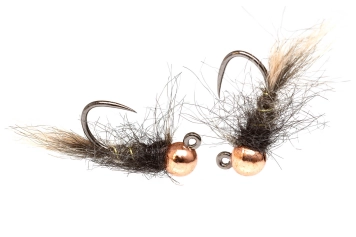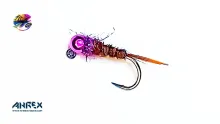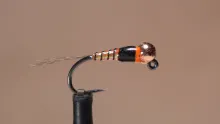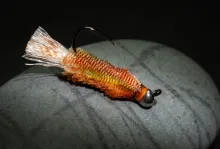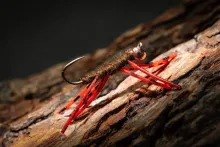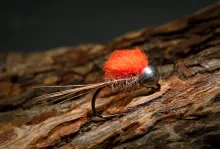A productive zonker pattern tied with synthetic fur. Easy to tie, easy to cast.
(1) sly or cunning.
(2) having a glossy skin.
The fashion industry generates many new materials to meet the demands of its consumers. Some of these developments get repurposed as fly tying materials. One of these is faux fur, which over the years has developed to a stage where, as garment buyers want, it’s pretty difficult to tell it apart from the real stuff.
Strips of various species of natural fur, usually rabbit, squirrel or mink, have been used since the 1970’s to make Zonker streamers. Once the skin under the fur becomes wet and softens, the fur undulates in the water giving an impression of a small fish. Therein lies the rub. Once the skin and fur are wet the fly becomes heavy when it’s out of the water, i.e., when you are trying to cast it. It can also take time for the skin to soften when it has dried out, so some anglers resort to storing their Zonkers in tubes of water rather than a fly box. Synthetic fur with a woven backing doesn’t absorb water into the materials, so unlike the real thing it doesn’t have to be soaked to become flexible and doesn’t cast like a wet sock.
The basic Sleekit Streamer design with a detached tail, a flashy coloured belly and a wrapped body has many possibilities for variation. Change the colour of the fur or use different colours for the tail and body. Use whatever you’ve got to hand for the belly, strands of tinsel, floss, organza fibres, or a mixture of different materials. The basic principle is to give the fly defined dorsal and ventral sides and to add an aiming spot behind the hook point. The organza fins are optional, I’m not sure the fish appreciate them, but they do add a fish feature to the design, and I like to make the effort sometimes.
- Run on the thread behind the bead, take down the shank in touching turns and remove the tag end. Take the thread forward and build up turns to lock the bead in place.
- Tie in a piece of ribbon pointing forward on either side of the shank behind the bead.
- Cut a piece of fur for the tail, trim away a little of the fur from one end and catch in the woven base at the end of the shank with the fur side down. Tie down up the shank.
- Fold your chosen belly material around the thread and tie down the doubled material along the top of the hook to the base of the tail. Trim the ends level with the tail.
- Trim the end of a second piece of fur, catch in at the end of the shank and tie down up to the bead.
- Wrap the fur forward in touching turns, stroking back the fibres at each turn. Tie in behind the bead and trim off the end.
- Pull the organza ribbon ends back and tie in. Trim the ends at an angle to form the fins.
- Clip off some fur fibres from a waste piece, dub them onto the thread and wind a collar behind the bead.
- Smear the thread with varnish, whip finish and cut the thread.
The Sleekit is a versatile little critter. You can scale up the tungsten bead size to 5.5mm or even 6.4mm, the hook will take a big bead. However, do not attempt to cast the biggest ones without a hard hat and an unlimited lifetime guarantee on your rod. They are just for short line fishing.
I use 4mm and 4.6mm beads on my standard streamers. I can fish these on an 11ft 3wt rod and a euro-nymphing line, or a 9.5-foot 3wt rod with a fly line for short distance casting. When I’m using these light rods, I’ll cast or lob the Sleekit upstream and let it drift down along the riverbed with the current with an occasional jig of the rod tip to simulate a struggling minnow or fry.
Alternatively, I can go the whole hog and use the same flies on a fast 9-foot 5wt rod, double haul and send the streamer zipping out to fish holding spots on the far bank. For long casts I use a roll cast to get the fly on surface followed by back cast with a haul to shed the water from the fly so it will fly out on the forward cast. Then it’s just a matter of fishing it across and down, lifting and lowering the rod tip and retrieving line to work the fur fibres in the current. Then strip it back in and chuck it out again. Repeat until something pulls back.
Nick Thomas
Ffofur Nymph
When you’ve tied up a few Sleekits you’ll have some leftover trimmings. Don’t chuck them away, they can be harvested for fur to make some effective scruffy nymphs. Tie in some of the fibres for a tail and dub the body with some more fur. Add a wire rib and a contrasting fur collar and you’re done. The ones below are tied on Fasna F-420 #14 jig hooks with 3.5mm copper slotted tungsten beads.
- Log in to post comments

